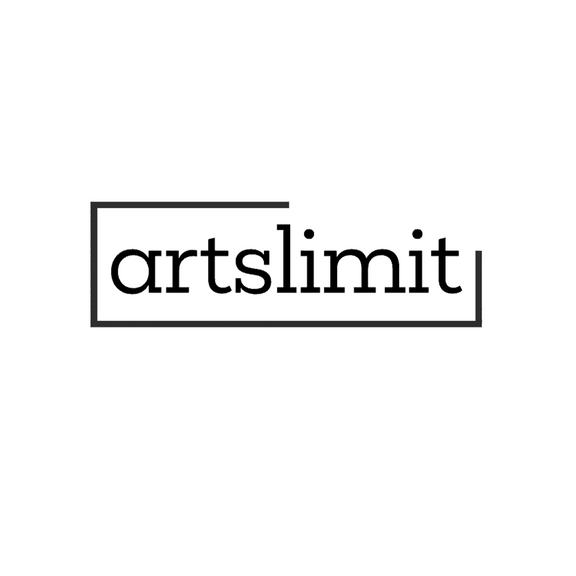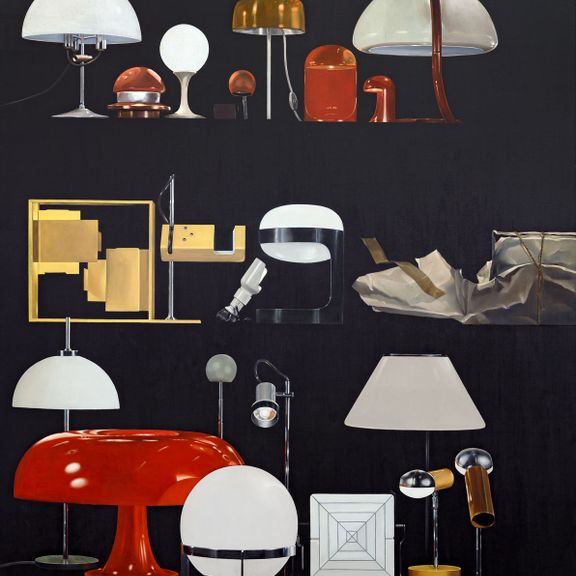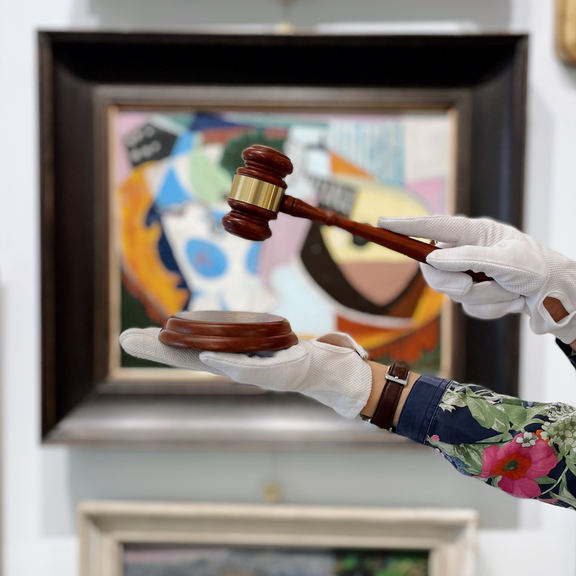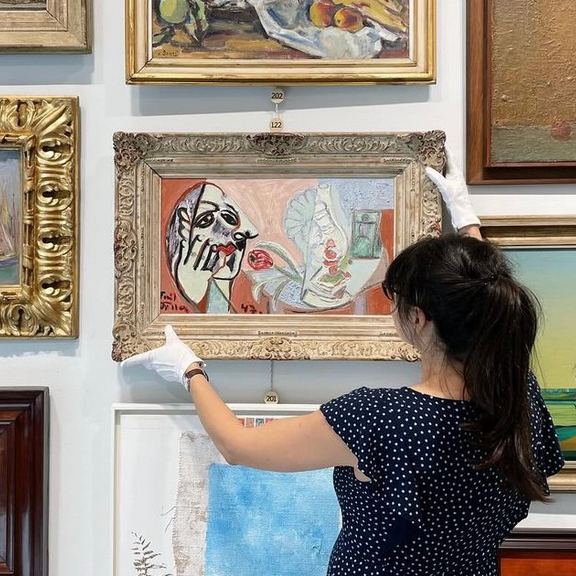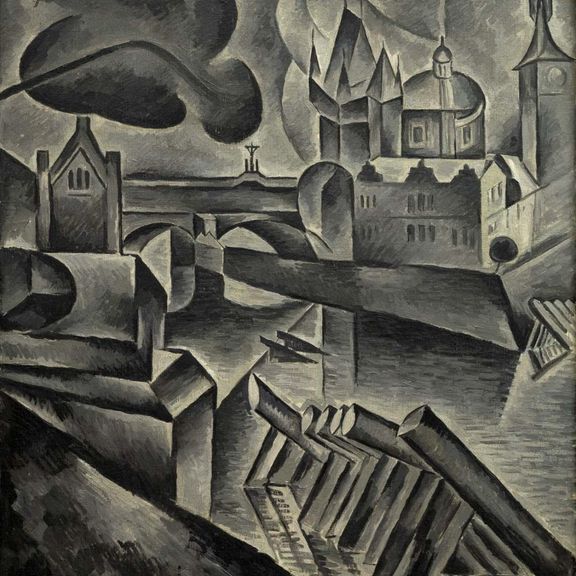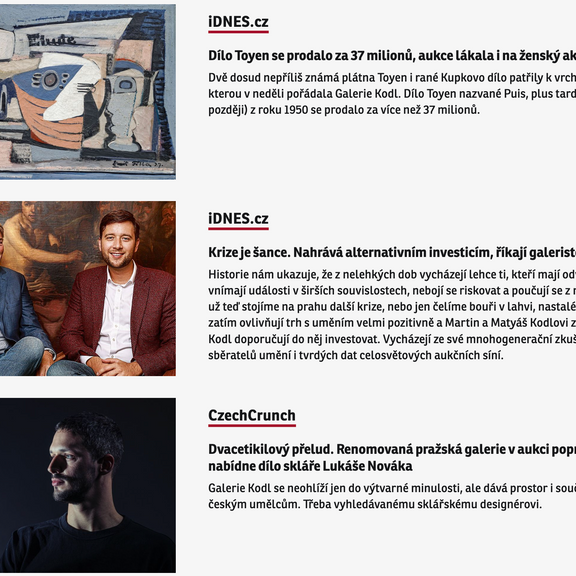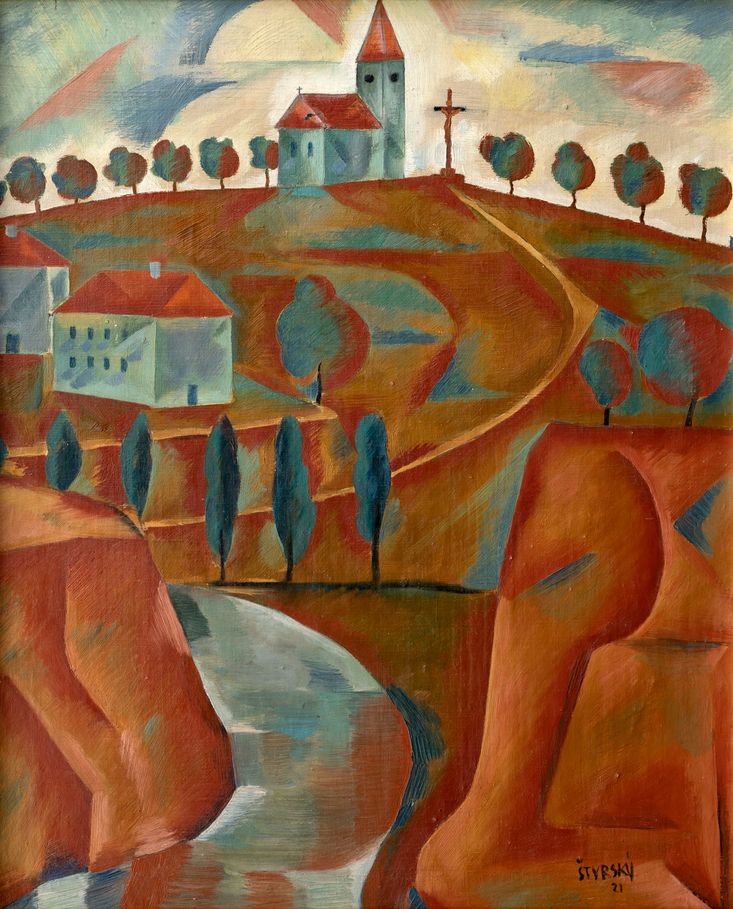
oil on canvas
1921
bottom right
56 × 46 cm
frame
Starting price: 6,500,000 CZK Final price: 8,520,000 CZK
Auction 84th, Lot 177 The double-sided painting by Jindřich Štyrský was directly inspired by his birthplace in Dolní Čermná and the churches in the surrounding villages, to which he devoted many of his early paintings and drawings. It has been inaccessible to the public for a long time and has not been exhibited in recent decades. Štyrský's independent existence outside his native region is connected with the Prague Academy of Fine Arts, to which he was admitted in 1920 shortly after his mother's death. However, in his desire for sophisticated avant-garde expression he found essential stimuli and the absorption of ideals elsewhere than in the studio of Jakub Obrovský, where he was studying at the time. He quickly came to terms with the work of artists he admired at the time, as well as the current trends, as can be seen in this distinctive, visually expressive and seemingly simple theme of a church on a hill. It was in the genre of landscapes that Štyrský clarified his new artistic methods. Here, for example, he had already fully absorbed the impulses of analytical cubism and approached the painting in a different, less illusory way, striving for a more solid compositional structure. The scene is captured from a high vantage point, across the river and parted rocks, followed by an alley with poplars and houses. The spectator's gaze then gradually rises to the horizon, on which there is a church building with a high crucifix standing in front of it. And even the sky in the background was not left empty by Štyrský. The painter constructed the whole painting on a significant flattening while preserving the integrity of the form, but placing emphasis on the individualization of the motifs, for which he found inspiration in his richly structured homeland of the Ústí nad Orlicí region. The contrast of shape, in the form of a playful, varied poetic naivism with the serious motif of a country shrine, brings tension to the scene, which is typical of Štyrský's early work. However, the value of the work is mainly increased by the fact that it is a double-sided canvas. On its reverse side is a figure in front of a tree, which was associated with St. Sebastian. This side of the painting has been preserved in a black and white photograph from the archive of Štyrský and was exhibited at the author's posthumous exhibition in SVU Mánes (April 4 - 25 1946, cat. no. 6) and reproduced in the author's most comprehensive monograph: L. Bydžovská / K. Srp, Argo, Prague 2007, page 33. Štyrský could have been inspired to paint St. Sebastian by the period interpretation of the famous painting by Bohumil Kubišta from 1912, which was generally known among artists. In a study published in 1920 in Veraikon, Jan Zrzavý described the character of St. Sebastian as "the silent cry of accusation against human society destroying artists", an idea that Štyrský himself probably shared. The artist carefully studied Kubišta's morphology and focused on the crystalline structure of the head as the spiritual center of the painting. Most of Štyrský's figural works from the very beginning of the 1920's are also the bearers of disturbing mental contents, which provided him with a clear starting point for a shape reassessment of his current painting form. The interpretation of this saint, which could have been a study for an intended larger image, is very interesting from the point of view of the further development of Štyrský's work, as this topic continued to be relevant in Czech modern painting. The value of this first-class painting is also increased by its origin from a top foreign collection. Assesed during consultations by prof. J. Zemina and PhDr. R. Michalová, Ph.D. From the attached expertise by PhDr. K. Srp: "[...] The double-sided painting is a fundamental work from the early creative period of Jindřich Štyrský. It can be considered as part of his own artistic expression from a time when he was just beginning to participate in group events. It is important that the painting has returned to the Czech Republic and it will therefore be possible to include it in other exhibitions. [...]".

